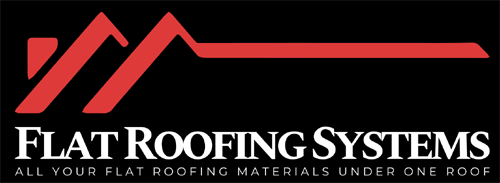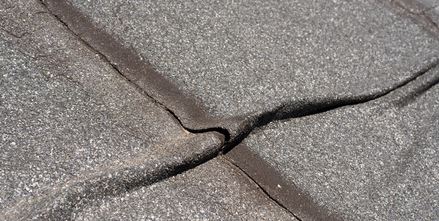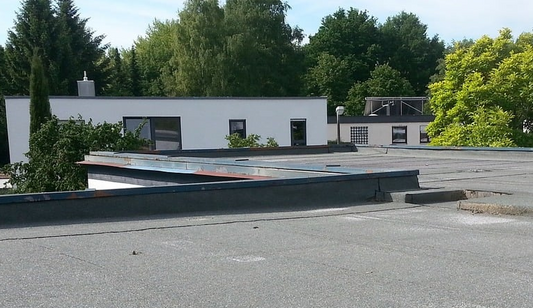When deciding between GRP fibreglass and EPDM roofing, you're basically choosing between two high-performance waterproofing solutions that have earned their stripes as reliable alternatives to traditional felt and other flat roofing types.
Both options boast impressive longevity, with EPDM roof membranes lasting up to 50 years and GRP fibreglass lasting around 25-30 years. While EPDM is more susceptible to accidental damage, GRP fibreglass is more durable and resistant to vandalism.
With factors like certification, cost, and suitability in mind, you'll need to weigh the pros and cons to make an informed decision - and there's more to explore to help you make the right choice for your project.
Key Points
- GRP fibreglass and EPDM roofing both offer high-calibre waterproofing, but the choice between them depends on project requirements and contractor preferences.
- EPDM roofing has a longer lifespan (up to 50 years) compared to GRP fibreglass roofs (25-30 years), but both are easily repairable.
- GRP fibreglass roofing is more durable and resistant to vandalism, while EPDM is more susceptible to accidental sharps damage and vandalism.
- Fibreglass is a better choice for balconies, elevated decks, and custom projects, while EPDM is suitable for larger applications and over-paving requirements.
Comparison Overview
When it comes to choosing between GRP fibreglass and EPDM roofing, you're likely weighing the pros and cons of each system, evaluating factors such as project requirements, personal experience, and contractor preferences.
Both options have their strengths and weaknesses, making the decision ultimately dependent on the specific circumstances of your project.
You'll find that both fibreglass and EPDM boast high-calibre waterproofing qualities, making them reliable alternatives to traditional felt and other flat roofing types.
This means you can choose the best fit for your project without any influence.
Your contractor's preference may also play a role in the decision, as they may have more experience or familiarity with one system over the other.
It's vital to take their input into account, as their expertise can substantially impact the project's success.
Life Expectancy and Longevity
As you weigh the pros and cons of GRP fibreglass and EPDM roofing, you'll want to ponder the lifespan of each system, particularly since it can substantially impact your project's long-term costs and maintenance needs.
When it comes to life expectancy, EPDM roofing takes the lead with a lifespan of up to 50 years, while GRP fibreglass roofs typically last between 25-30 years. However, both options are easily repairable for minor damages, and fibreglass roofs have a high resistance factor to vandalism.
Durability: Fibreglass roofs are more durable and less prone to damage from vandalism, while EPDM is more susceptible to accidental sharps damage and vandalism.
Repairability: Both fibreglass and EPDM roofs can be easily repaired, with fibreglass repairs being almost invisible.
Lifespan: EPDM roofing has a notably longer lifespan than GRP fibreglass roofing, which can impact long-term costs and maintenance needs.
Certification and Approvals
You'll need to guarantee that your chosen roofing material meets the necessary standards and regulations, and that's where certifications and approvals come into play.
Both GRP fibreglass and EPDM roofing have their own set of certifications and approvals that verify they meet the required standards. For instance, GRP fibreglass roofing often carries the BS EN 13707 certification, which is a European standard for fibre-reinforced plastic roofing. On the other hand, EPDM roofing usually meets the ASTM D4637 standard, which is an American standard for rubber roofing.
It's essential to check for these certifications and approvals before making a decision. You should also look for approvals from reputable organizations such as the British Board of Agrément (BBA) or the National Federation of Roofing Contractors (NFRC).
These approvals provide assurance that the roofing material has undergone rigorous testing and meets the required standards. By checking for certifications and approvals, you can have peace of mind knowing that your chosen roofing material is reliable and durable.
Cost and Suitability
Evaluating your budget and the specific requirements of your roofing project, it's crucial to weigh the costs and suitability of GRP fibreglass and EPDM roofing.
While fibreglass costs a bit more than EPDM upfront, both options are more cost-effective in the long run compared to traditional felt roofing.
So, what're the key suitability factors to ponder?
Foot traffic and durability: If you're working with balconies or elevated decks that require heavy foot traffic, fibreglass is a great choice due to its durability and resistance to wear and tear.
Unique shapes and joints: Fibreglass is more suitable for complex shapes and joints, making it a popular choice for custom or unique roofing projects.
Additional paving requirements: If you need to add extra paving to your roofing project, EPDM is a good option as it can be easily over-paved using geotextile fleece and paving slab supports.
Performance and Appearance
Performance is a critical aspect of any roofing material, and when it comes to GRP fibreglass and EPDM, both options boast impressive credentials, but with some key differences.
You'll find that fibreglass has a high resistance factor to vandalism and can withstand harsh conditions, whereas EPDM is very durable but may have issues with sharps and vandalism, making it more susceptible to damage.
When it comes to repairs, you'll be relieved to know that both fibreglass and EPDM are easily fixed.
However, fibreglass repairs are almost invisible, whereas EPDM repairs are more noticeable.
In terms of appearance, fibreglass takes the lead with its first-class look and easy cleaning, making it a popular choice for visible roofing areas.
EPDM, on the other hand, has a good clean appearance and is also easily cleaned, but may not be as aesthetically pleasing as fibreglass.
Considering performance and appearance, you'll need to weigh the importance of durability, repairability, and visual appeal when deciding between GRP fibreglass and EPDM roofing.
Installation and Weather Resistance
Installing a roofing material requires careful deliberation, and when it comes to GRP fibreglass and EPDM, their installation processes and weather resistance capabilities are distinct and critical factors in your decision-making process.
When it comes to installation, you'll find that EPDM is generally more DIY-friendly. It's installed as one sheet adhered to a roof decking using a wet bonding adhesive. On the other hand, GRP installation involves two layers of catalysed resin above and beneath a layer of fibreglass, requiring a top coat resin to weatherproof the surface. This makes GRP installation more complicated and time-consuming compared to EPDM.
Three key points to ponder when it comes to installation and weather resistance:
- EPDM's superior weather resistance makes it more suitable for larger applications, as it copes better with thermal shock caused by expansion and contraction.
- GRP's limitations mean it can't be used on large roofing projects due to excessive expansion and contraction rates.
- Both options are seam-free, reducing the risk of leaks and water damage, and making them extremely watertight.
Rounding Up
So, which roofing material is right for you - GRP fibreglass or EPDM?
Both have their strengths and weaknesses.
GRP fibreglass offers a longer lifespan and better weather resistance, but EPDM is more budget-friendly and easier to install.
Consider your climate, budget, and personal preferences when making your decision.
Ultimately, prioritize your needs and weigh the pros and cons to choose the best roofing solution for your building.




